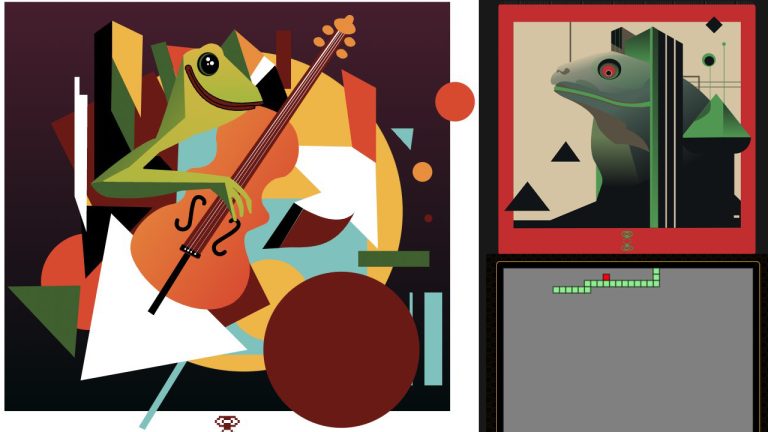 With the latest non-fungible token (NFT) trend on the Bitcoin blockchain, known as Bitcoin Stamps, users have issued more than 18,000 digital collectibles on the network. While this figure falls short of the number of Ordinal inscriptions, stamp creators are exploring new ways to leverage this technology. Number of Bitcoin Stamps Rises Above 18,000 A […]
With the latest non-fungible token (NFT) trend on the Bitcoin blockchain, known as Bitcoin Stamps, users have issued more than 18,000 digital collectibles on the network. While this figure falls short of the number of Ordinal inscriptions, stamp creators are exploring new ways to leverage this technology. Number of Bitcoin Stamps Rises Above 18,000 A […]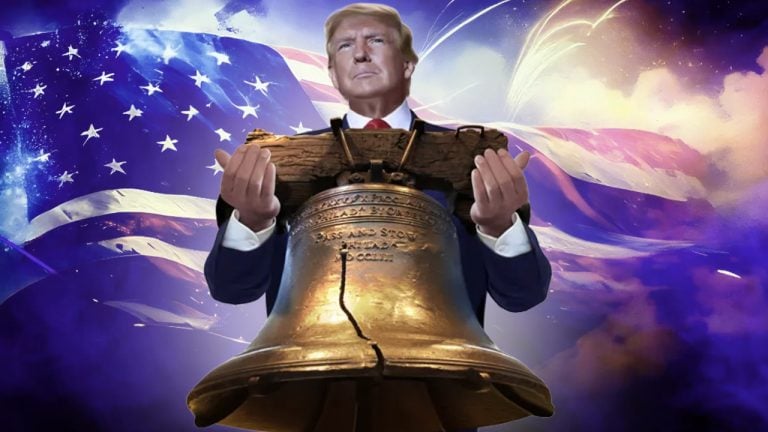 On April 18, former U.S. president Donald Trump announced a second series of his digital Trump card collection, following the “great success” of his initial non-fungible token (NFT) trading cards. Despite selling out rapidly, Trump stated on Truth Social that he maintained the initial card prices for the new collection. Trump Unveils Series 2 NFT […]
On April 18, former U.S. president Donald Trump announced a second series of his digital Trump card collection, following the “great success” of his initial non-fungible token (NFT) trading cards. Despite selling out rapidly, Trump stated on Truth Social that he maintained the initial card prices for the new collection. Trump Unveils Series 2 NFT […]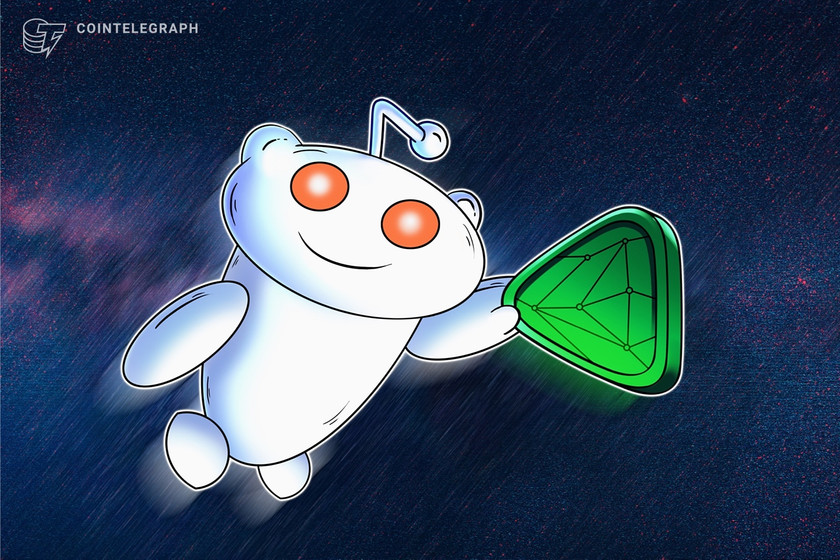
Bitcoin transaction fees from Ordinals inscriptions have exploded by 240% over the last month.
Bitcoin (BTC) miners have pocketed over $5 million from creating nonfungible token (NFT)-like inscriptions using the Ordinals protocol.
Transaction fees for Ordinals transactions exploded 240% from $1.5 million on March 10 to 5.2 million by April 12, according to Dune Analytics data.
The rise came on the back of a rather slow period between Feb. 16 and March 10, which from $1 million to $1.5 million. Prior to thatfees hit the $1 million mark within the first four weeks of the Ordinals protocol launching on Jan 21.

Nearly 1.1 million Ordinals have been inscribed on the Bitcoin network, mostly comprising JPEG images and text but also consisting of PDFs, video and audio formats.
Roughly 100 to 500 inscriptions are processed in each Bitcoin block, which usually contains between 2,000 to 3,000 transactions. Block 783,758 on April 3 saw a record 3,785 inscriptions, representing nearly 87% of the entire block.
This is Bitcoin block 783,758.
— Leonidas.og (@LeonidasNFT) April 12, 2023
It currently holds the record for having the most inscriptions.
3,785 inscriptions to be exact.
That's 86.7% of its transactions.
Ordinals are quite literally on their way to becoming the number one use case on Bitcoin. pic.twitter.com/BxcfbcBWeM
Online community platform Reddit launched its third batch (Gen 3) of NFTs on April 12 — a “Futures Realities Collection” of Collectible Avatars created by over 100 artists.
Reddit explained in its announcement that the artists behind each limited edition Avatar will receive royalties upon each sale and no cryptocurrency was needed to purchase them.
#RedditCollectibles fans, the wait is over! Gen 3 is officially available with limited-edition designs from over 100 different artists. Jump into the next dimension and get yours now. pic.twitter.com/QcCSAUs8rE
— Reddit (@Reddit) April 11, 2023
However, the release didn't come without issues. Many Reddit users claimed they missed out on the sale because spam bots swooped in almost instantly.
Man also believe the bots were the reason behind Reddit's NFT shop crashing shortly after launch.
"They didn't incorporate any type of spam or bot prevention, like a simple captcha. Of course the site got overloaded," one user wrote with another remarking there was "no way you guys didn’t even think of stopping bots during this drop."
Twitter user "Pastel Alpha" tweeted they managed to get "a good amount" of the NFTs "even though the site completely died" and thanked its "bot partners" for helping with its haul.
Even though the site completely died we managed to hit a good amount before the hour thanks to our custom Reddit monitor by our member @CheekyZoot
— Pastel Alpha (@PastelAlpha) April 11, 2023
No need to guess links
Checkouts thanks to our bot partners @orcarobot and @MinTechBots
Pastel on top pic.twitter.com/vVd45om8ZW
Reddit previously released a batch of Halloween-themed avatars in October, which was followed by and Super Bowl avatars in February.
Shoe brand Adidas has released the first leg of its latest dynamic NFT collection “ALTs by Adidas” the latest move by the company on its quest to expand its NFT ecosystem.
The dynamic NFTs will evolve based on the decisions and engagement of the owner, according to an announcement on April 11 which described the collection as the “first step” towards owning an “ALTS by Adidas” identity.
Chapter 1: ALT[er] Ego starts now
— Indigo Herz (@indigo_herz) April 11, 2023
This is your first step on your journey towards your own ‘ALTS by adidas’ identity.
At the end of Chapter 3 you will get a unique PFP consisting of countless trait combinations with a rarity rank.
ALTS by adidas is a dynamic NFT… pic.twitter.com/0D9lrvIy6y
The floor price of each Adidas NFT is 0.666 Ether (ETH) ($1,275) and has raked in 351 ETH ($672,000) in trading volume so far. There are now 8,989 owners, 56% of them unique.
Related: NFT warranties can help mass adoption of the technology, says Web3 exec
There are 16,000 items in total and the creators taking a 10% cut of each sale.

Collectors must buy and burn Phase 1 and 2 of Adidas' "Into the Metaverse" tokens in order to receive the ALTS by Adidas NFT.
A NFT collection commemorating the late Kung-Fu fighter and movie star, Bruce “Little Dragon” Lee, has been released by the Bruce Lee Estate in partnership with Shibuya, an NFT-driven video platform.
Plans for the release were revealed on April 11 when Lee's Twitter account, managed by his family, shared an old video clip of Lee, which then transformed him into an animated version of himself.
My last name is Lee. Bruce Lee. pic.twitter.com/hc678dzRgO
— Bruce Lee (@brucelee) April 11, 2023
The NFTs sold at a starting price of 0.008 ETH, or $15, and 13,907 were minted in the first 24 hours, totaling over $205,000 according to its smart contract address on Etherscan.
The NFTs were drawn by artist Emily “pplpleasr” Yang and were designed by Shannon Lee — Bruce Lee’s daughter.

Despite it being an “open edition” collection, collectors can only mint a maximum of 100 of the NFTs.
NFT marketplace OpenSea launched “OpenSea Pro” last week, a new, specialized NFT marketplace aggregator aimed at serving the needs of professional NFT traders. The service was made possible by OpenSea’s acquisition of fellow NFT aggregator, Gem, in April 2022.
An NFT trader fat-fingered a bid for a free NFT buying it at 100 Ether ($191,000). The token was part of NFT marketplace OpenSea’s Gemesis NFT collection to commemorate the launch of OpenSea Pro on April 4. Some believe the trader meant to bid the token for $100 instead.
NFT Creator, Emily Xie: Creating ‘organic’ generative art from robotic algorithms
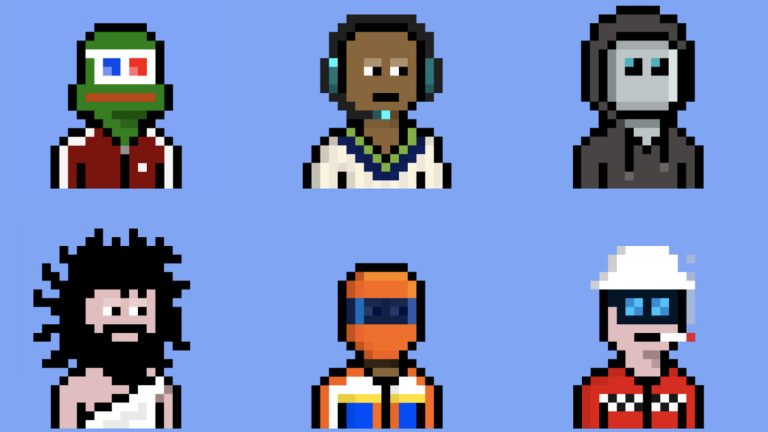 Sales of non-fungible tokens (NFTs) increased this week, with $179.64 million in sales over the last seven days. NFT sales rose 7.28% and transactions grew by 2.29% during this period, but the number of digital collectible buyers decreased by 4.34%. NFT Sales Improve This Week, Rising 7.28% Higher Sales of non-fungible tokens (NFTs) have trended […]
Sales of non-fungible tokens (NFTs) increased this week, with $179.64 million in sales over the last seven days. NFT sales rose 7.28% and transactions grew by 2.29% during this period, but the number of digital collectible buyers decreased by 4.34%. NFT Sales Improve This Week, Rising 7.28% Higher Sales of non-fungible tokens (NFTs) have trended […]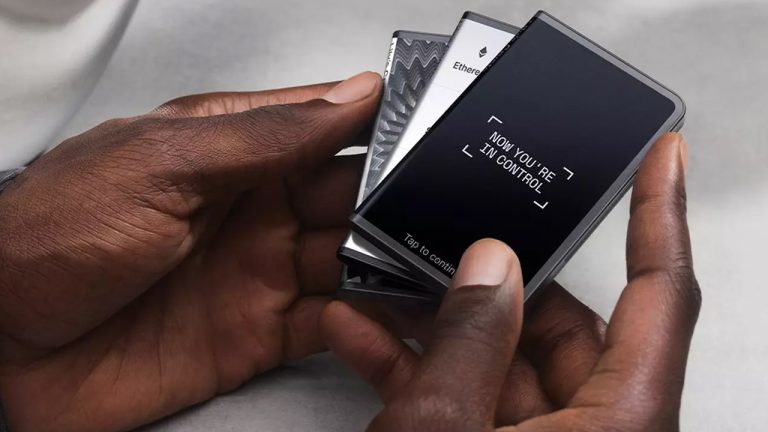 The cryptocurrency hardware wallet manufacturer Ledger has raised €100 million ($109 million) in funding, according to the company’s disclosure on Thursday. Ledger CEO Pascal Gauthier says there has been significant demand for hardware wallets. He added, “2023 is even better for us because now you can’t even leave money at a Swiss bank.” Ledger to […]
The cryptocurrency hardware wallet manufacturer Ledger has raised €100 million ($109 million) in funding, according to the company’s disclosure on Thursday. Ledger CEO Pascal Gauthier says there has been significant demand for hardware wallets. He added, “2023 is even better for us because now you can’t even leave money at a Swiss bank.” Ledger to […]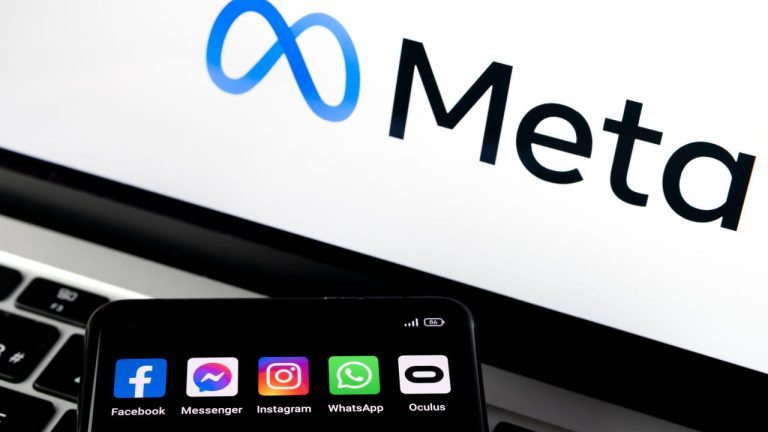 U.S. tech giant Meta is giving up on operations with non-fungible tokens (NFTs) amid ongoing turbulence in the crypto space. The company allowed creators to share digital collectibles on its leading social media platforms last year. Meta Platforms Cutting Off Support for Non-Fungible Tokens California-based technology conglomerate Meta is winding down support for digital collectibles […]
U.S. tech giant Meta is giving up on operations with non-fungible tokens (NFTs) amid ongoing turbulence in the crypto space. The company allowed creators to share digital collectibles on its leading social media platforms last year. Meta Platforms Cutting Off Support for Non-Fungible Tokens California-based technology conglomerate Meta is winding down support for digital collectibles […]
The short-lived NFT features were first launched in May 2022, but Meta's financial technology lead said it's "winding down" the tools to focus elsewhere.
Big Tech firm Meta is scrapping its nonfungible token (NFT) feature across its social media platforms Facebook and Instagram just under a year after it launched.
Stephane Kasriel, Meta's head of commerce and financial technologies, tweeted the news on Mar. 13, saying Meta is "winding down" its NFT support as it wishes to "focus on other ways to support creators, people, and businesses."
Some product news: across the company, we're looking closely at what we prioritize to increase our focus. We’re winding down digital collectibles (NFTs) for now to focus on other ways to support creators, people, and businesses. [1/5]
— Stephane Kasriel (@skasriel) March 13, 2023
Kasriel added the firm is still prioritizing ways for users to "connect with their fans and monetize" and will focus on such as building payment rails on its platform and through its messaging apps and monetizing Reels — the company's short form video tool.
The product was relatively short-lived as testing began in May 2022 with select United States-based creators on Instagram before it expanded to Facebook that June. It expanded again in July as Instagram made NFT tools available to over 100 countries.
This is a developing story, and further information will be added as it becomes available.

Bitcoin ordinals have been the most hyped-up Web3 trend of 2023 so far. How do ordinals compare to traditional NFTs, and what are the opportunities?
Ordinals are different from traditional NFTs from a technical design perspective. There are several features that make the pricing for ordinals a different exercise.
Bitcoin ordinals, as mentioned before, help identify sats uniquely and have content or art stored on-chain. Ethereum’s ERC-721 standard, which is used to create NFTs, typically holds the metadata or a pointer to the art, which is generally held off-chain. Some Ethereum NFTs are experimenting with on-chain storage, but they are more of an exception.
The other key difference with Bitcoin ordinals is the way rarity is derived and how pricing around the NFTs would work. With traditional Ethereum-based NFTs, the attributes of the art typically define the rarity of the NFT and, subsequently, its price. With NFTs like Ethereum Name Service (ENS) for instance, limited supply drives the value.
However, with Bitcoin ordinals, pricing would be defined by key moments that a Bitcoin block would represent. The first 1,000 or 10,000 ordinals inscribed might still be treasured by collectors. Don’t be surprised if the genesis Bitcoin ordinal is sold for a few million dollars in a couple of years. Yet some sats would be considered more precious than others.
A simple framework suggested by the founders of Bitcoin ordinals is that key events would decide the rarity of a sat and the ordinal inscribed into that. The first sat of every new block would be rarer than the other sats in the block. The first sat of an adjustment period that occurs approximately every two weeks would be even rarer. As the next halving is slated for 2024, the first sat of each halving epoch would add another level of rarity.
Finally, the first sat of the adjustment period, which happens once every six halvings (approximately once in 24 years), would be another level of rarity. Per the founders of this amazing innovation, this could differentiate Bitcoin ordinals from NFTs and make their rarity truly random and not controlled by the founding teams of nonfungible token collections or by their artists.
This could also help understand why the activity around Bitcoin ordinals has already peaked in the short term. It would be interesting to see how activity ramps up closer to the Bitcoin halving in 2024.
Bitcoin ordinals are a great innovation that can highlight various applications unique to the chain, thereby driving developers to participate and create the tools needed by users.
Bitcoin ordinals have certainly seen a hype that potentially peaked sometime in February 2023, based on transaction data. However, the hype around the application tier on the Bitcoin blockchain is just getting started.
For instance, Stacks (STX) has seen a rise in price since the ordinals episode warmed up. It is clearly the early days for the Bitcoin ecosystem, but if developers are attracted to the chain, then the network effects between developers and users could come in time for the next crypto cycle.
Related: Bitcoin DeFi ecosystem explained
However, there are downsides to the way ordinals have been designed. As the inscribed content is all on-chain with ordinals unlike with most Ethereum-based NFTs, the size of the blockchain would increase. As new applications emerge and network utilization and transactions increase, so will the cost of transactions.
The other potential impact of Bitcoin ordinals is whether it will affect the fungibility of sats. So far, satoshis have been exchanged with one sat being valued the same as another. With various applications of ordinals, this may not be true in the future. A sat with a Bitcoin Punk inscribed in it could be priced differently. Nonetheless, it would be interesting to see how this narrative evolves over the next few months and years.
Much like the process of minting Bitcoin ordinals, the trading process hasn’t had the matured tooling. Yet there are a few tools to trade these digital artifacts.
As Bitcoin ordinals grow in popularity, most of the trades have been largely over-the-counter. Collections, such as “Planetary Ordinals” and “Bitcoin Punks,” among the first 1,000 inscriptions were transacted mostly without an NFT marketplace such as OpenSea or Blur.
However, tools like the Ordinals Wallet, Hiro and Xverse allow users to buy and sell Bitcoin ordinals. Users can buy some sats within the wallet, using on-ramp payment plugins, and perform the transactions to buy and sell ordinals.
The typical user journey involved in buying Bitcoin ordinals using Ordinals Wallet is as follows.
Mining, minting or inscribing Bitcoin ordinals are the terms that have been used to refer to this process. Unlike minting NFTs on the Ethereum blockchain, which is a relatively matured process, mining Bitcoin ordinals is a technically complex process and lacks intuitive tools.
Bitcoin ordinals, in the initial days, could only be mined by those who ran a Bitcoin node. For tech-savvy users, a Bitcoin node with the ord app, a command line wallet, would be the gateway to mining ordinals. Node operators would load their wallets with some sats to pay for the gas fees and perform an inscribing process on their ordinals.
However, no-code ordinal mining applications like the Gamma or the Ordinals Bot aim to allow users to upload the content that they want to inscribe to create their Bitcoin ordinal. The user journey takes them through a payment process using a QR code and is intuitive enough for the less technically gifted.
The tools around Bitcoin ordinals are still at a very early stage. It has only been a few months since the genesis ordinals were inscribed. As demand from ordinary users and followers increases, the ecosystem and the tooling should start maturing with more user-friendly journeys.
Bitcoin ordinals are based on ordinals theory that essentially has brought life to satoshis (sats) and allows them to be treated as atomic units on the Bitcoin blockchain. Ordinals, in their simplest state, are a numbering scheme for sats.
Ordinals theory drives the mechanics behind how Bitcoin ordinals work. Ordinals theory defines satoshis (sats) as the atomic unit that can be identified and traded individually on the Bitcoin network. There are 100 million sats that make up 1 Bitcoin (BTC). Sats are numbered based on the order of mining, and this number, which uniquely identifies a sat, is an ordinal number.
Related: Bitcoin vs. Satoshi: Key differences explained
By being a unit of transaction, sats can also be inscribed with digital content that make up Bitcoin ordinals. They become immutable digital collectibles that can be transacted on the Bitcoin network using Bitcoin wallets. As per ordinal theory, sats can be attached to security tokens, accounts or stablecoins using ordinal numbers as stable identifiers.
Due to the broad set of use cases that ordinals can support, Rodarmor prefers not to equate Bitcoin ordinals with NFTs. The use case of ordinals to number a sat that’s been attached to or inscribed with a JPEG can be called a nonfungible token on the Bitcoin blockchain. Although the ordinal’s use that found market fit is that of NFTs on the Bitcoin blockchain, ordinals are much more than just nonfungible tokens.
Bitcoin NFTs — aka Bitcoin ordinals, aka digital artifacts — are a way to inscribe digital content on the Bitcoin blockchain.
The Bitcoin ordinals protocol was launched in January 2023 by Casey Rodarmor. The protocol allows inscribing of digital content like art onto the Bitcoin blockchain. Unlike nonfungible tokens (NFTs) on Ethereum and other blockchains, Rodarmor wanted to create an immutable on-chain presence of a piece of art, text or video. The genesis ordinal was a pixel art of a skull that Rodarmor inscribed on Dec. 14, 2022.
As the NFT space based on Ethereum’s ERC-721 standard skyrocketed in 2021, Rodarmor, who was a programmer and an artist, saw the opportunity to create a similar yet unique experience on the Bitcoin blockchain. His solution was Bitcoin ordinals, based on ordinal theory, which he went on to implement through 2022.
Ordinal theory concerns itself with satoshis, giving them individual identities and allowing them to be tracked, transferred and imbued with meaning. The ordinals hype really kicked off in February 2023, six weeks after the genesis ordinal was created.
The number of inscriptions doubled every week for a few weeks. However, the number could have been much higher if the infrastructure to inscribe and trade ordinals had been better planned and executed.

The rise of Bitcoin ordinals has seen the Bitcoin network explode in terms of usage, fees and storage space as shown in the chart above. This may also be the first big breakthrough for the Bitcoin application tier and can help move the narrative from a pure “store of value” to something more utilitarian.
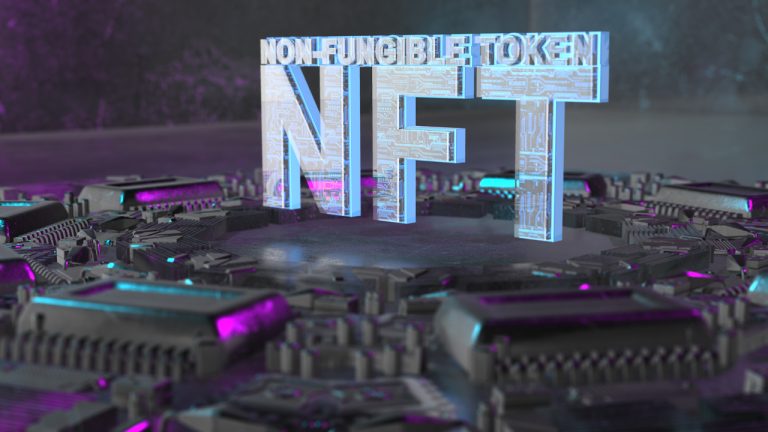 After a significant spike in February, sales of non-fungible tokens (NFTs) in the last seven days are 32.32% lower than last week. Of the 19 different blockchains, Ethereum accounted for $148.56 million out of the total $186.20 million in NFT sales settled this week. NFT Sales Decline Following February Spike in Digital Collectible Purchases During […]
After a significant spike in February, sales of non-fungible tokens (NFTs) in the last seven days are 32.32% lower than last week. Of the 19 different blockchains, Ethereum accounted for $148.56 million out of the total $186.20 million in NFT sales settled this week. NFT Sales Decline Following February Spike in Digital Collectible Purchases During […] On Monday, Feb. 27, 2023, the number of Ordinal inscriptions on the Bitcoin blockchain crossed 200,000 at 1:02 p.m. Eastern Time. In addition to the 200,000 inscriptions, Yuga Labs, creators of the Bored Ape Yacht Club (BAYC) non-fungible tokens (NFTs), revealed that the team had created a collection of 300 generative ordinal NFTs called Twelvefold. […]
On Monday, Feb. 27, 2023, the number of Ordinal inscriptions on the Bitcoin blockchain crossed 200,000 at 1:02 p.m. Eastern Time. In addition to the 200,000 inscriptions, Yuga Labs, creators of the Bored Ape Yacht Club (BAYC) non-fungible tokens (NFTs), revealed that the team had created a collection of 300 generative ordinal NFTs called Twelvefold. […]